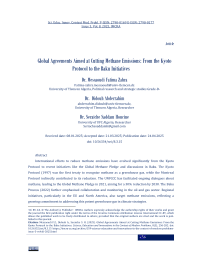Global Agreements Aimed at Cutting Methane Emissions: From the Kyoto Protocol to the Baku Initiatives
Автор: Messaoudi F.Z., Didouh A., Seraiche S.H.
Журнал: Science, Education and Innovations in the Context of Modern Problems @imcra
Статья в выпуске: 3 vol.8, 2025 года.
Бесплатный доступ
International efforts to reduce methane emissions have evolved significantly from the Kyoto Protocol to recent initiatives like the Global Methane Pledge and discussions in Baku. The Kyoto Protocol (1997) was the first treaty to recognize methane as a greenhouse gas, while the Montreal Protocol indirectly contributed to its reduction. The UNFCCC has facilitated ongoing dialogues about methane, leading to the Global Methane Pledge in 2021, aiming for a 30% reduction by 2030. The Baku Process (2022) further emphasized collaboration and monitoring in the oil and gas sector. Regional initiatives, particularly in the EU and North America, also target methane emissions, reflecting a growing commitment to addressing this potent greenhouse gas in climate strategies.
Methane emissions -Kyoto Protocol-Global Methane Pledge-Baku Process-Montreal Protocol-Climate change-International cooperation-Climate strategies
Короткий адрес: https://sciup.org/16010490
IDR: 16010490 | DOI: 10.56334/sei/8.3.15
Текст научной статьи Global Agreements Aimed at Cutting Methane Emissions: From the Kyoto Protocol to the Baku Initiatives
Citation: Messaoudi F.Z., Didouh A., Seraiche S. H. (2025). Global Agreements Aimed at Cutting Methane Emissions: From the Kyoto Protocol to the Baku Initiatives. Science, Education and Innovations in the Context of Modern Problems, 8(3), 256-282. doi: 10.56352/sei/8.3.15
Introduction to Methane Emissions and Climate Change:
Methane is a potent greenhouse gas (GHG) with a global warming potential (GWP) of 28-35 times that of carbon dioxide over a 100-year period. While methane and carbon dioxide are the most significant long-lived GHGs, methane breaks down to carbon dioxide and other compounds over time. The 100-year GWP of methane reflects its importance when considering short-lived climate forcers; however, unlike black carbon, methane’s life in the atmosphere of around 9-12 years is long enough to facilitate tractable global mitigation efforts. The main sources of anthropogenic methane emissions are agriculture, waste management, and the extraction and use of fossil fuels, as well as wetlands and other kinds of land use changes. Methane production has decreased since the beginning of the 21st century, but it represented 56% of the total GHG emissions in 2020. Consequently, methane demands action, especially since the atmospheric abundance increased by 160% over the past 300 years. Processes like stratospheric oxidation, microbial uptake, and photochemical loss are responsible for a natural decrease in the methane budget.
The selection of biological and physical removal pathways mirrors the scientific community’s understanding of the importance of curbing methane emissions. Despite the key position that methane occupies in the international climate action narrative, at least one simple question that this text seeks to address is often overlooked: whether a concrete international commitment targeting methane emissions has ever been made, and if so, how has it evolved over time? From the signing of the Kyoto Protocol to the emissions targets of the recently published Glasgow Climate Pact and the accompanying Baku Declaration highlighting the importance of methane emission reduction, it offers a concise history of international discussions and agreements.
The research problem centers on the effectiveness of current strategies for reducing methane emissions in various sectors, including agriculture, waste management, and fossil fuel extraction. Despite international agreements like the Global Methane Pledge, there is a lack of comprehensive data on emissions sources and the effectiveness of mitigation measures. This gap complicates the development of targeted policies and interventions. Furthermore, disparities in technology adoption and regulatory frameworks among different countries raise questions about the equitable implementation of methane reduction strategies. Investigating these issues is essential to identify best practices and inform more effective global and regional policies aimed at significantly curbing methane emissions ; The research
Sci. Educ. Innov. Context Mod. Probl. P-ISSN: 2790-0169 E-ISSN: 2790-0177 Issue 3, Vol. 8, 2025, IMCRA problem centers on the effectiveness of current strategies for reducing methane emissions in various sectors, including agriculture, waste management, and fossil fuel extraction.
Despite international agreements like the Global Methane Pledge, there is a lack of comprehensive data on emissions sources and the effectiveness of mitigation measures. This gap complicates the development of targeted policies and interventions.
Further more, disparities in technology adoption and regulatory frameworks among different countries raise questions about the equitable implementation of methane reduction strategies. Investigating these issues is essential to identify best practices and inform more effective global and regional policies aimed at significantly curbing methane emissions. What are the most effective strategies for reducing methane emissions across different sectors, and how can international cooperation enhance the implementation of these strategies?
-
I. Overview of Methane as a Greenhouse Gas
A comprehensive analysis of the future of international conventions to reduce greenhouse gases should take the following into account:
Methane is the second most important greenhouse gas, following CO2, and is nearly 30 times more effective than CO2 in causing greenhouse warming in the next 100 years, with its Global Warming Potential (GWP) calculated as 28 (vs. 1 for CO2). In the seventy years after its emission, CH4 is 84 times more effective; and during the first twenty years, its GWP is 84 due to its tolerance to ultraviolet radiation, which reproduces ozone in the lower atmosphere where CH4 is predominant2. In addition, the
Sci. Educ. Innov. Context Mod. Probl. P-ISSN: 2790-0169 E-ISSN: 2790-0177 Issue 3, Vol. 8, 2025, IMCRA breakdown of the carbon sink compound - OH - over this time period is more rapid. This is why addressing CH4 along with HFCs and N2O is critical if the ambitions of the Paris Agreement are to be realized. Methane has an average atmospheric lifetime of twelve years. It decays into CO2 (+ H2O) through a two-step reaction catalyzed by the hydroxyl radical. Thus, a "bio-based" carbon market does not, and as a rule, should not, kick the can down the road past mid-century, when more stringent cuts will be needed.1 Methane is generated by the interaction of microbes with many natural and anthropogenic sources: wetlands, termites, natural gas systems, enteric fermentation, rice cultivation, landfills, actions of wastewater, wastewater treatment, fermentation of organic matter in animal and human waste which is composted or managed by anaerobic microorganisms, sediment in fresh waters, and coal, oil, etc. that is mined or extracted.
-
II. Historical Context: The Kyoto Protocol
The 1997 Kyoto Protocol represents a critical landmark in international climate policy. The protocol created legally binding commitments for developed countries to reduce emissions of greenhouse gases, including methane, over the period 2008-2012. Though less definitive for methane than for carbon dioxide, the protocol was supported by a number of provisions, innovations, and commitments that arguably laid the groundwork for future action on both issues and made it possible for the protocol to actually lead to a decrease in global CH4 emissions. Kyoto also established a number of procedures and bodies that continued to shape discussions on actions to mitigate methane emissions after the protocol’s first commitment period.2
Though the negotiations leading up to the Kyoto Protocol were abundant with technical details and acronyms, Kyoto’s adoption in December 1997 was a much-hyped event because it was the first
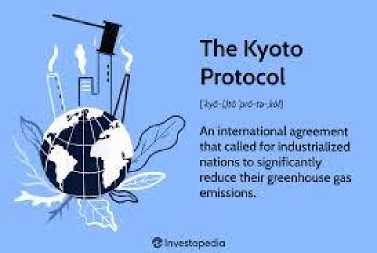
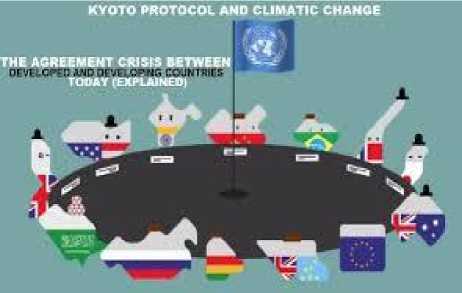
Sci. Educ. Innov. Context Mod. Probl. P-ISSN: 2790-0169 E-ISSN: 2790-0177 Issue 3, Vol. 8, 2025, IMCRA time international negotiations produced a legally binding treaty that impacted efforts to solve the world's most pressing environmental problem. A few actors, both individual actors and organizations, played a pivotal role in shaping Kyoto's basic economic and geographic elements as negotiated in 1997. Signatories to the treaty were asked to reduce or offset their emissions of carbon, methane, and other greenhouse gases by at least 5.2% below their 1990 levels during the commitment period. Protocols to the Convention go further to enumerate the activities that were permissible, the kinds of GHG-measuring land uses or covers that could be used, and the kinds of project documents that are acceptable.
There was a provision in this instance for a fast-track crediting provision for forestation and reforestation, and the powers and duties of the applicable Executive Board were also spelled out. The willingness to allow some form of carbon trading or offset mechanism continued to be perhaps the most contentious issue in protracted negotiations.
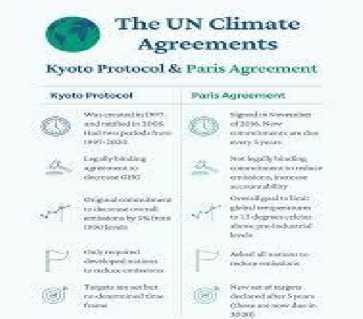
Kyoto Protocol

192 Nations Except International Climate To Saw Earth and
America Treaty Change Fight Climate Change
‘|‘1М№г*«м<то
Sci. Educ. Innov. Context Mod. Probl. P-ISSN: 2790-0169 E-ISSN: 2790-0177 Issue 3, Vol. 8, 2025, IMCRA
-
1. Key Provisions Related to Methane Emissions
The Kyoto Protocol text contains specific provisions related to methane. One of the three flexible mechanisms included in the Protocol, called "Joint Implementation," was suggested as a way to avoid an obligation to cut methane emissions under the agreement, which would be too costly for the country. 1The other flexible mechanism, the so-called Clean Development Mechanism, was later included as a way to have developing countries participating in the process, as it would be similarly too costly for them to cut the emissions. In this way, the Protocol came to contain flexible mechanisms that guided the thinking about the reduction of greenhouse gases.
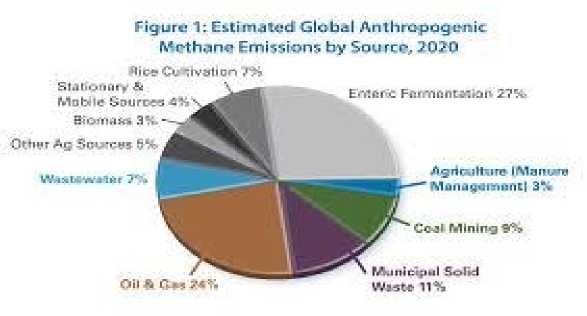
Country-specific targets apply only to the "basket of 6" gases mentioned above. The text does not specify any threshold with regard to methane emissions, and the implications may be twofold. In one interpretation, since the targets only apply to the basket of 6 gases, an implicit assumption is made that methane reduction will occur once carbon dioxide emissions in connection with fossil fuel combustion are reduced. In another interpretation, the Kyoto Protocol also mentions a series of voluntary actions and mechanisms to be discussed that again are directly related to the possibility of reducing methane pollution. The purpose of the abovementioned Joint Implementation was to lessen the costs of country compliance with targets. 2The usual way to achieve this would be to allow developed countries with a high cost of compliance to invest in the reduction of methane emissions in a country with a low cost of emissions.
-
1 Adam, David (14 April 2009). "World will not meet 2C warming target, climate change experts agree". The Guardian. Archived from the original on 6 September 2013. Retrieved 14 April 2009. The poll comes as UN negotiations to agree a new global treaty to regulate carbon pollution gather pace in advance of a key meeting in Copenhagen in December. Officials will try to agree a successor to the Kyoto protocol, the first phase of which expires in 2012.
-
2 king, D.; et al. (July 2011), "Copenhagen and Cancun", International climate change negotiations: Key lessons and next steps (PDF), Oxford, UK: Smith School of Enterprise and the Environment, University of Oxford, p. 12, archived from the original (PDF) on 13 January 2012
-
2.Evolution of International Agreements on Climate Change
The Kyoto Protocol represented a milestone in global climate diplomacy as it reflected a practical framework for the joint reduction of global greenhouse levels. Though the Kyoto Protocol had set targets for reducing greenhouse gas emissions, the rising trend of average temperatures was unaffected. Climate diplomacy was trying to transform the principle of negotiated asymmetry completely1. This transition from the Kyoto Framework necessitated the approval of the Paris Agreement in 2015, which implemented a bottom-up approach by which all nations, including the most industrialized countries, engaged to cut gas emissions in the deal. The difference in this paradigm is the involvement of initiatives worldwide to achieve quantifiable objectives, arguing the historic agreement behind the negotiations, the sum of which might eventually compromise international climate targets. This philosophical and strategic transformation was subsequently applied in 2015, making cause-based policies a key advancement and component of the international community's incentive to reduce worldwide fossil fuel gas pollution.

Sci. Educ. Innov. Context Mod. Probl. P-ISSN: 2790-0169 E-ISSN: 2790-0177 Issue 3, Vol. 8, 2025, IMCRA
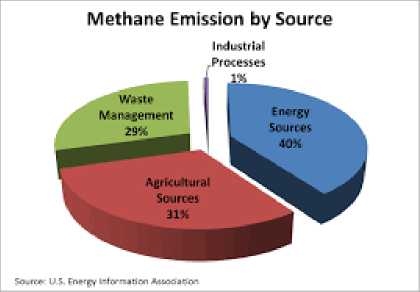
With increasing international tension to accelerate progress towards additional national commitments, emissions of methane in recent years have emerged as a possible area of low-hanging fruit in the route of seasonal warming. This strategy for renewing local measures to revitalize existing international initiatives pursuing methane target greenhouse gas aspirations has historically evolved into a comprehensive approach. There have been many ways to mitigate methane through a comparative study of the efforts to control emissions from an operational standpoint.
-
1 UN Climate Change Secretariat (8 December 2012), Doha climate conference opens gateway to greater ambition and action on climate change (press release) (PDF), Bonn, Germany: UN Climate Change Secretariat, archived from the original (PDF) on 30 March 2013, p.2.
Sci. Educ. Innov. Context Mod. Probl. P-ISSN: 2790-0169 E-ISSN: 2790-0177 Issue 3, Vol. 8, 2025, IMCRA
-
III. From Kyoto to the Paris Agreement
The Paris Agreement signals a further important step in international climate policy. In its architecture, it differs significantly from its predecessor. While the previous agreement defined legally binding emission reduction targets for selected countries, the Paris Agreement stipulates a joint bottom-up, "nationally determined contributions" approach, allowing all countries to make contributions based on their own national circumstances and staged over time.
A significant change, then, lies in the structure of commitment. While the previous agreement assigned industrial countries strict, quantitative emissions targets, the Paris Agreement does not specify such mandatory, legally binding targets. 1Instead, it follows a more inclusive framework. In connection with the new temperature goals of keeping a global average temperature rise "well below 2°C above pre-industrial levels and pursuing efforts to limit the temperature increase to 1.5°C," countries' emis-sions-reduction commitments are "intended nationally determined contributions," rather than "quantified emission limitation and reduction objectives" as under the previous agreement.
The Paris Agreement 2also entails changes in the regime's legitimation strategies, which impact the role of non-state actors in climate politics. The role of non-state and sub-national actors, who become increasingly important in climate action concerning methane, will be elaborated on further in the following sections. The recognition of the increasing concentration of GHGs and the plausibility of a future dilution of the previous target – together with the necessity of an overshooting scenario – justified the previous agreement, as they foreclosed further emissions. The Paris Agreement, in contrast, is the first agreement focusing on the emission reduction of existing GHGs and providing concepts for adaptation methods and "negative emissions" strategies, which also comprise the reduction of existing levels of GHGs, such as CH4.
The Paris Agreement and Beyond

-
1 UN climate talks extend Kyoto Protocol, promise compensation". BBC News. 8 December 2012. Archived from the original on 16 July 2018. Retrieved 22 June 2018.
-
2 Ban Ki Moon, Secretary General of the United Nations, called on world leaders to come to an agreement on halting global warming during the 69th Session of the UN General Assembly[152] on 23 September 2014 in New York. The next climate summit was held in Paris in 2015, out of which emerged the Paris Agreement, the successor to the Kyoto Protocol.
Sci. Educ. Innov. Context Mod. Probl. P-ISSN: 2790-0169 E-ISSN: 2790-0177 Issue 3, Vol. 8, 2025, IMCRA
Thus, the temperature target underlying the Paris Agreement is based on relatively direct deductions from a linear no-threshold theory of climate change impacts, such as CH4.
-
IV. Regional Focus: Central Asia and the Caucasus
Comprised of five countries that only recently emerged from over seventy years of rule by the Soviet Union, Central Asia and the Caucasus is a region of transit for energy sources. Both Kazakhstan and Turkmenistan possess significant energy resources, and in recent years, plans have been pursued to transport these gas resources westward to Europe without entering the pipeline system of the Russian Federation. Azerbaijan has oil and gas technical transit corridors and is an important oil and gas producer in its own right. Georgia is a transit country, and Armenia is almost wholly dependent on energy imports. Methane1 is a particularly potent greenhouse gas, and gas flares and estuarial gas releases associated with energy extraction are among the region’s main sources of anthropogenic methane emissions. Bundled pipelines further increase the amount of methane frequently released into the atmosphere. Agro-pastoral communities are the region’s main asset in the mitigation of global environmental problems. Although regional methane emissions pale into insignificance when set against those from coal-burning behemoths, they remain significant in global terms. For this reason, the region is a significant focus for those seeking to mitigate global levels of emissions by hardening the region’s high pasture against methane, especially those involved in measures for reducing emissions from deforestation and degradation. Promoting policies that reinforce carbon-absorbing capacity and ethnic kinship between those who inhabit the region’s agro-pastoral landscapes can act as a competitive counterbalance to the income that the sale of greenhouse gas-producing resources creates. Cooperation between governmental agencies as well as non-governmental organizations is promoting the inclusion of a reduction in gas flaring and enclosed space methane leaks on the agenda of international climate conventions. It is hoped that a mechanism will be established to attract significant global and regional private investment in an attempt to harden the high pasture against methane emissions. The governments are attracted by the fact that the countries’ existing energy policies hold the possibility of transcending parochial interests and promoting local economic and societal development. Regional cooperation on this is further complicated by the specifics of the management of agriculture and energy. Regionally, many sources of agro-pastoral methane revolve around animal husbandry and primarily the artificial water sources necessary for animal husbandry. In many cases, herd sizes are kept artificially high due
-
1 Gupta, S.; et al. (2007). "13.3.1 Evaluations of existing climate change agreements. In (book chapter): Policies, instruments, and co-operative arrangements.". In B. Metz; et al. (eds.). Climate Change 2007: Mitigation. Contribution of Working Group III to the Fourth Assessment Report of the
Sci. Educ. Innov. Context Mod. Probl. P-ISSN: 2790-0169 E-ISSN: 2790-0177 Issue 3, Vol. 8, 2025, IMCRA
to extra pastures resulting from the construction of upstream hydropower reservoirs. Other sources of agro-pastoral methane revolve around pastures that were previously forests and were subsequently shorn of their carbon-absorbing trees.
-
1. Methane Emissions in the Region
-
4. Indicators and Drivers of Methane Emissions in the Caucasus and Central Asia 4.1. Methane Emissions in the Region In the Caucasus and Central Asia, countries undertake minimal interest in emissions of pollutants such as methane. In several countries, this increase is due to an increase in natural gas extraction, processing, transmission, and distribution, where natural gas is often vented and flared to make way for crude oil. In countries with major energy use sectors or the main sources of emissions, such as Armenia, Azerbaijan, and Georgia1, the extraction of natural gas is part of the "other" industry sector accounting for emissions. Given the importance of the energy sector in this region, the mineral induced emissions probably constitute the largest single source in some countries. Indeed, Uzbekistan reported CO2 emission factors based on the energy sector accounting for 100% of fugitive emissions in the country. Fugitive methane emissions from agriculture and waste management, as well as handling and storage of gasoline, contribute to a lesser extent. Agricultural emissions are reported by six countries: Azerbaijan, Kazakhstan, Kyrgyzstan, Tajikistan, Turkmenistan, and Uzbekistan. The proportion of methane emissions from agriculture ranges from 443% in Kazakhstan to 2026% in Tajik-
AVMtnMl'H

istan.
Global Projection of GHG, non-CO3 GHG, with CH,
W

Q •£ f l £ •? Q •£ C l X T О X Г J X T О £
Q С ~ г- СЧ LT. Гч Гч 00
oczooaocoOaocooaOo
ГЧСЧГЧГМСЧМСМСЧГМСЧСМСЧСЧСЧСЧСЧМ
-
-
2. Policy Instruments and Mechanisms
^Baseline Gases (Total) —GHG ^ nCO,-GHG ^ CH,
An array of policy instruments exists in order to facilitate reductions globally. They fit into different categories based on how they restrain emissions, with the underlying approach informing the abil-
Sci. Educ. Innov. Context Mod. Probl. P-ISSN: 2790-0169 E-ISSN: 2790-0177 Issue 3, Vol. 8, 2025, IMCRA ity of the policy to motivate reduced emissions from landfills, agriculture, and energy sectors. This chapter will outline the design of different policy instruments, from regulatory approaches to more innovative financial mechanisms. The chapter will also consider the interplay of government policies and market incentives, and the current effectiveness of their employment for addressing methane management and enabling progress towards international commitments.
Methane management can be promoted through the use of regulatory and voluntary measures to reduce barriers to emissions prevention, or by focusing on the expansion of recovery and utilization options, the installation of abatement equipment, or capturing and flaring methane. There are two common mechanisms employed at local and national levels to lower barriers to investing in methane reduction projects: the government's set of policies or incentives, which are driven in response to regulatory frameworks, and other policies aimed at the development of preventing and abating methane. Despite positive experiences with some regulatory-based approaches, comprehensive policy change and market development require addressing economic, technological, and environmental aspects sim-ultaneously.1 Given the exponential growth in the oil and gas sector and emissions from mobile sources, integration with voluntary advocacy and education programs, and with certified greenhouse gas reductions programs, has often been found essential in promoting widespread change. Program success is generally tied to the extent of effort, costs, and risks shared among partners, which are often brought to the table by those who will directly benefit.
-
V. Market-Based Solutions
Over the years, several market-based solutions have been proposed as effective means to reduce the level of methane emissions more quickly than can be achieved with a system that is completely reliant upon regulatory provisions. Proposed mechanisms include creating a market for carbon credits linked to methane reduction or, in the case of cap-and-trade schemes, linked to total greenhouse gas or carbon-equivalent emissions within a facility, organization, or jurisdiction. The fundamental principle supporting these solutions is that the quality of the environmental benefits (in this case, as a result of reducing methane emissions) is the same for all projects irrespective of which organization or facility has undertaken them.
Experience from some domestic and international case studies indicates that these mechanisms can effectively drive emission reductions. Under the right circumstances, market imperatives can drive organizations to look for energy efficiency gains in every part of their operations in order to reduce the cost burden of cap and trade.
-
1 Intergovernmental Panel on Climate Change. Print version: Cambridge University Press, Cambridge, UK, and New York, N.Y., U.S.A.. This version: IPCC website. Archived from the original on 3 May 2010. Retrieved 2 April 2010.

Sci. Educ. Innov. Context Mod. Probl. P-ISSN: 2790-0169 E-ISSN: 2790-0177 Issue 3, Vol. 8, 2025, IMCRA
It is expected that the kind of financial incentives created by these mechanisms will be viewed favorably by private sector investment. Third-party certification and verification are essential to ensure the integrity and permanence of any market-based approach. An increased role for certification or market intermediaries is a consideration.

Appropriate terms are essential to ensure the integrity of the emissions reduction program over the long term. One significant challenge with any emissions trading-style system is the tendency for price volatility and capital market dynamics to interfere with the market price for environmental credits. The possible uncertainty associated with market-based approaches offers a degree of assurance that can make these approaches a useful supplement to policy-driven regulatory action to reduce emissions. In practice, market-based approaches are likely to be implemented in conjunction with regulatory frameworks in cases where clarity and consistency are needed. The investment community requires more detail to provide a clear indication to those entities involved. In general, the practical evidence from various emissions trading programs indicates that it is feasible to develop, trial, and implement emissions trading programs.
-
1 .Technological Innovations and Best Practices
-
2 . Methane Capture and Utilization Technologies
Technological and methodological best practices for reducing methane emissions have been reviewed as part of guidelines for good waste practices. This is based on the many case studies, technologies, and methodologies available for the reduction of methane emissions and the wide range of situations found in different countries around the world. Separately, developments in the ongoing research and development of innovative technologies, practices, and processes to non-oxidatively destroy or utilize captured methane have been, and are being created to help industry, government, and other key stakeholders make progress towards reducing methane emissions from assisted technologies and prac-
Sci. Educ. Innov. Context Mod. Probl. P-ISSN: 2790-0169 E-ISSN: 2790-0177 Issue 3, Vol. 8, 2025, IMCRA tices.1 This leads to facility/community-wide emissions reductions. Other technologies such as selective catalytic reduction, selective/non-selective catalytic oxidation, and catalytic oxidation methods have been developed for removal, nitrous oxide, and residual ammonia abatement.
There has been a growing interest in the utility and process of destroyed methane for use and emissions reduction. The usage and practice of destroyed methane can range from on-site hydropower, consumer energy products, environmental, and/or social benefits to off-site sales, benefit generation, and revenue gain. The development and application of these technologies is a key focus of ongoing research and implementation. Due to the ongoing development and deployment of chemistry and chemical methods used for on-site thermal treatment and utilization of methane, this report will summarize a number of different innovative technologies for methane capture and universal separation based on their performance.2 Active ongoing research and development may result in new processes, technologies, products, or management practices at any time, so it is important to note that this is not an extensive list of developments, methods, processes, or technologies. An examination of the various technologies, methodologies, practices, and methods has been developed and implemented to non-oxidatively destroy or utilize small amounts of captured methane.
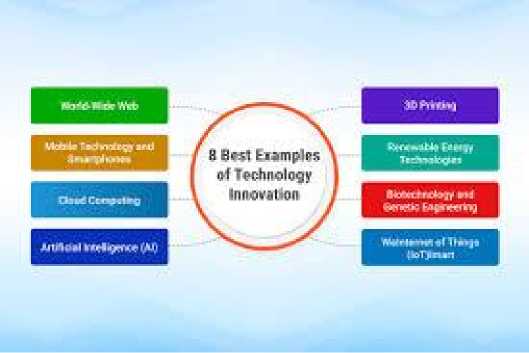
The last part of this section summarizes information on existing technologies that are designed to reduce methane emissions by capturing methane for utilization in various forms. Although in many instances it is indeed possible to achieve the iron law of value, i.e., to profitably capture and utilize me-
-
1 Kyoto Protocol to the United Nations Framework Convention on Climate Change". UN Treaty Database. Archived from the original on 8 October 2018. Retrieved 27 November 2014.
-
2 Opti ,cit p21
-
3 .Monitoring, Reporting, and Verification (MRV) Systems
Sci. Educ. Innov. Context Mod. Probl. P-ISSN: 2790-0169 E-ISSN: 2790-0177 Issue 3, Vol. 8, 2025, IMCRA thane emissions, the failure of carbon trading markets and exclusive reliance on export income have left a number of projects environmentally and economically infeasible.1
Generally, it is important to present this body of work in this case following the introductory statement of feasibility, as it provides evidence that it is economically realistic to reduce sources of emissions in industries not yet concerned with carbon pricing.

Technologies and methods have been developed over the last 20 years for reducing the emission of methane from a variety of sources. This section provides an overview of these technologies, including both purging and recovery-based technologies, where gas is either driven into a recovery system using a vacuum or captured after release by flaring or oxidized, and recovery systems, where gas is taken directly from natural or man-made chambers. The main method used is anaerobic digestion, which may be complemented by aeration of sludges in solids treatment systems. The advantages of each method, as well as any particular disadvantages or difficulties, are outlined. There are also case studies provided for each of the technologies in the text. This section also gives an assessment of many of the technologies, including indicative costs and returns on investment. A brief discussion of policy supports provided to encourage implementation of these technologies is also given. Both the opportunity of capturing and utilizing methane and the challenges involved are emphasized in this part of the text. The opportunity is in the potential cost savings associated with the large amounts of methane that are typically released, and in the potential for technologies to be scaled in developing country settings. The main challenges and barriers are the high up-front costs and need for regulatory or market certainty.
A crucial part of the governance of anthropogenic methane lies in the organization and functioning of Monitoring, Reporting, and Verification (MRV) systems. An MRV framework can be seen as a meta-
1 Gupta, S.; et al,opt cit ,p123
Sci. Educ. Innov. Context Mod. Probl. P-ISSN: 2790-0169 E-ISSN: 2790-0177 Issue 3, Vol. 8, 2025, IMCRA system that links three separate systems. This meta-system is important for the accountability of those entities that function within the MRV. Key elements of an MRV system include those operative in the measurement of emissions and removals, data gathering and data recording, and the range of processes related to reporting and rectification. Importantly, emissions reporting is dependent on the quality of the relevant data. The actual data collection and analysis need to be consistent, even comparative. Some interactions with national political systems are necessary, but company and national data should be subject to, and provided for, external scrutiny, including that of comparing outputs from those systems used for verification to the external data. Yet compiling data does not escape the possibility of factoring in external influences, such as population change, technological change, or the impacts of imports and exports that may have consequences for emissions.
Additionally, data reporting and MRV systems need to be sensitive to such changes. All MRV systems call for a strong element of accuracy and specificity. Detailed guides or 'books' need to be drawn up both for measurement and emissions estimating, as well as for the reporting system. While these remain important, it is vital that the data derived are transparent. Transparency is indicated in the relationship between inventory and national accounts, but it is also the form that good practice can take. Transparency in these new relationships can also aid in reducing transaction costs. Assurance of data sets is key in an emission-reduction initiative. Monitoring is seen as essential for emissions trading strategies, as are feedback loops to measurements and inventory improvement1. A range of methodologies, tools, models, and techniques are used across those involved with such MRV systems for systems management, economic assessment, and technology impact prediction, for example. Trying to productively incorporate these different methodologies, other than to deliver the necessary data, may be difficult in some systems, particularly those of the less industrial nations. A good MRV system can further the trust of stakeholders. Accountability can also be seen to be furthered. Compliance as commitment becomes clearer, and evasion should be reduced by an improved MRV. Successfully operating the MRV system is one of the key factors in any wider range of climate actions. The MRV needs to demonstrate to an international audience the effectiveness and credibility of such specific programs, as proportionate to wider national obligations. Yet the development of MRV systems here can also support, or be supported by, the private sector in creating investment opportunities. MRV is also on the periphery of some adaptation schemes. There are significant barriers when it comes to developing MRV systems, and much of this will come to a head during the capabilities and capacity-building discussions. This may be the technical and financial capacity of developing countries to track international projects or direct financial flows over time or mechanisms that will compensate, perhaps through insurance, for the im-
Sci. Educ. Innov. Context Mod. Probl. P-ISSN: 2790-0169 E-ISSN: 2790-0177 Issue 3, Vol. 8, 2025, IMCRA pacts of extreme events. Successful MRVs exist in various mechanisms, and those supporting payments from levy-generated projects. In the pipeline, projects call for adaptable systems. Development of these MRVs might not become a mandate, but investment is currently already being made into such a system. As concerns commitments in agriculture, forestry, and rural development, influential MRV systems are being invested in from a carbon trading perspective. Social and biodiversity aspects are even part of the consideration here.
-
VI. Importance of Data Transparency
Considerable activity in the international arena has focused on reducing methane emissions over recent decades. An immediate imperative in any methane management system, regardless of which sectors are included or what measures are taken to cut emissions, is to collect and report high-quality emissions data. In many cases, this involves directly measuring and counting the methane at source, and involves producers and intermediaries who may not initially appreciate how such data can be used. This subsection is informed by these imperatives1: - Trust is required to underpin every investment and decision that players in the value chain undertake. Governments and stakeholders must have confidence in emission reduction claims. There can be no trust without transparency. - Clear and consistent data across a wide variety of sources is essential for tracking the progress, or otherwise, of specific activities designed to reduce all time-dependent emissions; holding sources or industry sectors accountable; and formulating policy that benefits all players in the value chain equitably. It is essential that there are consistent definitions, collection tools, and mechanisms for setting owner-ship/accountability and linked investment cases.
Recognized international methane data reporting and sharing frameworks represent best practice based on shared gender objectives. Such mechanisms implement best practice and exploit the best available and emerging technology for efficient and consistent access to data and knowledge for all. Mechanisms noted in these guiding principles are capable of handling the required high data flow rates associated with routine data acquisition for hundreds of thousands to millions of field-based facilities, including data sharing requirements up the value chain to multinational companies. With appropriate governance arrangements, such best practice mechanisms also provide timely and efficient access to operational data required by emergency services. Challenges in applying international best practice, most notably in older and less developed countries, lie with remote instruments, where the costs of installation and maintaining robust high-quality communication links make them expensive. Challenges also exist with workflow systems for chasing up missing data, instituting and documenting derogations,
Sci. Educ. Innov. Context Mod. Probl. P-ISSN: 2790-0169 E-ISSN: 2790-0177 Issue 3, Vol. 8, 2025, IMCRA and in some countries in the deployment of full data transmission speed from a field-based facility all the way to an independent national data consolidation center.
Data and information technology systems today are well beyond these data collection challenges, and best practice is to build off such advanced capabilities across the data collection and management value chain, from endpoint to governance. Open and transparent data and information communication takes data sharing to another level and is central today to an increasingly technology-sophisticated public, for both business decision-making and the wider energy/environment decision-making where investors, local communities, and policymakers want to be able to access information and the story behind the numbers. The importance of transparent, open data and the volume and quality criteria of data are also important contributors to the public perception and creation of unfounded emotional bias in investors and communities. Additionally, the ease with which new standards can be used and adapted by newcomers is an important part of future best practice system design. Overall, these challenges point to the need for professional quality-consistent data that is standardized. The mechanisms for data reporting and consolidation should conform to standard company norms and/or comply with widely accepted rules of the game of financial and other norms equivalent to the analysis of any small or large organization, including the standard expectation that directors sign off on the veracity of an organization's financial and related statements, as is best practice across the world1.
-
1 .Challenges and Opportunities in Implementation
A range of national and international initiatives have been mounted to reduce methane emissions. These efforts reveal a variety of challenges and barriers. Perhaps the most important of these are financial, as methane emissions are generally a by-product of economic activities, and reductions may therefore represent costs. The technological opportunities for reducing methane emissions are also often constrained, particularly in developing countries. Moreover, there are gaps in technical and managerial capacity to implement mitigation measures effectively. Political will is largely divided, with some nations more committed to reducing nitrous emissions, while others have demonstrated their commitment more towards the global effort. Social factors can also act as a barrier to the safe use of mitigation options, such as capital market imperfections and vulnerability to high short-term transaction costs.
Sci. Educ. Innov. Context Mod. Probl. P-ISSN: 2790-0169 E-ISSN: 2790-0177 Issue 3, Vol. 8, 2025, IMCRA
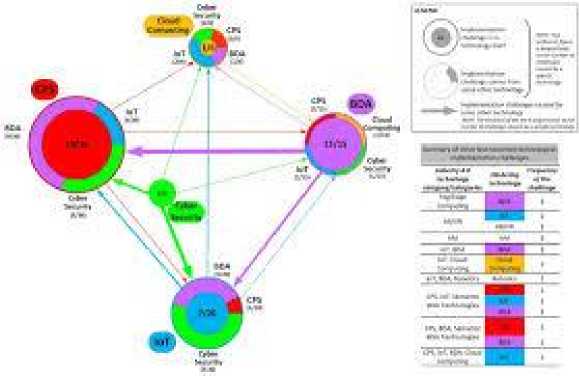
While these obstacles can clearly hinder methane reduction initiatives, there are also clear opportunities that will assist the development of improved methane reduction strategies. Cooperation in reducing methane emissions internationally is critical, and the current process has the potential to catalyze policy experimentation and learning. Developing countries, in particular, may benefit from the capacity-building opportunities presented by international emissions reduction initiatives that improve the capability of developing countries to identify, develop, and implement constant best practices. In addition to capacity building, using mechanisms to tackle climate change represents an opportunity to bring new money into developing countries1.
Meanwhile, the experience of implementing projects could help develop new approaches to technology transfer that are relevant and practically useful. The sharing of results and experiences in implementing projects could help those taking part, and indeed others not at the cutting edge, to learn 'what works' in policy design. Capacity building, improved knowledge, technology transfer, and the experience gained from directly implementing methane reduction projects are obviously involved in removing some of the aforementioned barriers. Alongside, the potential for new and highly costeffective initiatives in the future exists, possibly in methane capture from landfill, wastewater treatment, and municipal solid waste. Designing policies that support such innovation is also important. For example, more directed methane reduction programs might be needed in order to remove the larger institutional and social barriers to their adoption. As we have already seen, such programs are often politically difficult to make work given the range of obstacles outlined earlier.
A critical enabling need for effective implementation of methane reduction strategies is capacity in the host countries. Capacity building is crucial not only to create a pool of expertise in the country, but also to provide implementation infrastructure at many levels. This section seeks to support the view that capacity building should be given serious consideration in the context of the global debate on the need to reduce emissions of GHGs, including methane. Countries need to develop their capabilities before they can be expected to contribute to addressing this global environmental issue. Key areas for capacity development include technical upskilling in the area of methane abatement. This includes training of skilled experts in the energy, agriculture, and waste sectors in reducing methane emissions. A large gap currently exists in many countries in the ability to technically manage methane, whether it is in production or in dealing with vented emissions. The development of the necessary research base for national environmental and economic circumstances, and the suitable abatement strategies for the technical capacity that has been developed, will be important. Changes in regulatory frameworks for reducing emissions also require an ongoing capacity development program. Many countries are in the early stages of the management of point-source and vented methane. Engagement in these changes by those responsible for environmental or agricultural production functions, as well as by local government advisers, agencies, and aid organizations, needs to be effectively and systematically developed1. Challenges are faced by many countries in capacity-building activities. Many countries either lack the resources for training, or language training courses are unavailable, making participation difficult for many countries. However, there is a vast wealth of experience in various regions with professional and technical skills and research knowledge of methane that could be engaged in a range of delivery mechanisms. There is a need for international agencies and mechanisms to support developing countries to engage this pool of talent to increase countries' capacity to meet their commitments2. In order to assist in capacity building and the transfer of knowledge in abatement technologies, international workshops in the energy, waste, and agricultural sectors with the broad interests of abating greenhouse gas emissions will also need to be developed to extract the combined expertise that exists. Management of methane in all sectors has been the focus of research in the early movers, and considerable activity exists to develop strategies. However, in order to extend this historical knowledge and experience, the international community also must examine abatement technologies which could and should be promoted, especially in developing countries and economies in transition.
-
1 Bryman, A., Social Research Methods (Oxford: Oxford UniversityPress, 2015).
-
2 Babu, S. and S. Blom, Capacity Development for Resilient FoodSystems: Issues, Approaches, and Knowledge Gaps, 2020 Conference Paper 6 (Washington, DC: International Food PolicyResearch Institute, 2014).
Sci. Educ. Innov. Context Mod. Probl. P-ISSN: 2790-0169 E-ISSN: 2790-0177 Issue 3, Vol. 8, 2025, IMCRA
-
VII. Case Studies and Success Stories
This collection presents case studies and success stories that showcase the many effective things that have been done to reduce methane. Notably, the studies expand the focus from the original content to the current issue, the reduction of methane emissions. Individual articles present a diverse range of successful initiatives from different world regions. While diverse in setting and focus, the case studies share many common features including: reduction of methane in the waste sector, local community involvement, commitment, actions taken, and lessons learned. Many of the case studies demonstrate the positive consequences for communities that have implemented methane reduction activities, such as an extended landfill life or reduced pollution. The case studies all demonstrate the lessons that can be learned from the full range of activities that contribute to the Global Methane Initiative, including energy projects.
The Kauri Deforestation Project supported the development of a methodology to reduce landclearing emissions while promoting long-term reforestation, which is expected to be of great benefit, particularly to environmentally conscious organizations. Another important effort in this area is the Wind Power Project aiming to reduce GHG emissions by replacing fossil fuel with wind-generated electricity. The Trout Lake Passive Treatment Project is the first-ever GHG project developed in Latin America and is the first project of any type to be developed in Chile. The five case studies presented in the following sections detail experiences that may offer others valuable strategies, potential pitfalls to avoid, and insights for improvement.
-
1. Lessons Learned from Methane Reduction Projects
A robust literature captures the experiences and evaluations of methane reduction projects in locations across the globe. The lessons learned are directly relevant to the kinds of small-scale energy projects envisioned to implement adaptation and no-regrets strategies to reduce vulnerability to climate change. At the 50th meeting of the Subsidiary Body for Scientific and Technical Advice in October 2019, a stakeholder constituency representing seven countries in advocating for the incorporation of lessons learned from the numerous international experiences in a side event, a written submission, and a communication that was placed in the regular official documents. The lessons learned may be translated into seven lessons from the experience getting things done in the real world. The collaboration's organization was responsible for creating most of the innovative financing and business models that characterized the methane recovery investment vehicle over its decade-long implementation.
-
2. Role of Non-State Actors
-
3. Civil Society Engagement
The key lessons are presented as an introduction to a resource guide for practitioners to document and disseminate these lessons. Sections 4, 5, and 6 of this reference manual address these three issues. Progress is demonstrated with story-like, written, photo, and televised materials pertinent to
Sci. Educ. Innov. Context Mod. Probl. P-ISSN: 2790-0169 E-ISSN: 2790-0177 Issue 3, Vol. 8, 2025, IMCRA the lessons learned described earlier in this chapter based on coming to the end of the Partnership's methane-to-markets financing mechanism program. Below the conceptualization of adaptation, the main lessons that have emerged from the experiences of these endeavors, sourced from a range of project reports and documentation, are presented. Building on experiences drawn from small-scale methane recovery programs listed above, the following highlights represent these experiences that are mentioned in the countries' reports as part of the Compact report. Many of these lessons are relevant on a tactical level to project implementers and funders of small-scale solutions. Overall, these findings can be meaningful for informing the practice of small-scale clean energy implementations in both the Global South and North.
Non-state actors play a significant role in raising awareness of the environmental and social costs of methane emissions and in developing new solutions and tools. In any context, non-state actors are more flexible than government actors. As the governmental landscape has shifted over time, so too have the trends in non-state actor involvement. For the most part, public awareness of the important role of methane echoes the level of resources allocated for related programs and policies. Trends also show a wealth of successful programs and initiatives taken up by non-state actors, often in the absence of governmental action. Many local organizations, for example, help implement state-approved climate strategies1.
When political systems have not been able to address or even respond to the issue of global climate change, some of the most dynamic international cooperation has come from non-state actors such as major corporations, non-profit organizations, and local communities. Civil society and others have begun to make vital yet small steps, incrementally improving conditions where possible.2 Moreover, these efforts have begun to enforce action on the strategies of government actors. Emerging in just a single decade, California's six combinations of methane emission reduction initiatives show the potential of such cooperation. Governments are using, more and more, economic strategies to allow non-state actors to validate the validity of policy initiatives. Public subsidies and tax treatments for specific activities that reduce emissions have been offered. In addition, businesses and non-profit organizations can make a profit by selling or trading these emission credits.
Sci. Educ. Innov. Context Mod. Probl. P-ISSN: 2790-0169 E-ISSN: 2790-0177 Issue 3, Vol. 8, 2025, IMCRA
Civil society is playing an increasingly important role in driving reflexivity by encouraging initiatives to reduce methane emissions. By engaging with and mobilizing public opinion, civil society organizations are increasingly contributing to efforts to communicate at various scales—globally, regionally, and nationally—that reducing methane emissions should be a priority in the fight against climate change. The legitimacy of the normative framework emphasizing the importance of reducing both CO2 and tropospheric ozone precursors via methane reduction has thus been burnished and buttressed by recent trends, not least among the dedicated consultative participatory forums. Civil society operates both from within such structured, regulated processes and externally to them, via campaigns and movements that span multiple forums and issue areas. In both cases, civil society organizations argue that reducing and ultimately eliminating methane emissions caused by human activities and production networks requires the full and inclusive engagement of affected communities and groups in policy and decision-making processes that engender those emissions, asserting that the systemic and synergistic nature of locally caused, produced, and experienced methane emissions will not be adequately managed or mitigated if only invited participants and stakeholders are included. Issues repeatedly taken up by such organizations have typically included inquiries and campaigns on local landfill impacts and alternative approaches to resource and waste management such as biolids recycling, resource recovery, methane capture and use, composting, home composting, and a wide range of waste avoidance, minimization, and reduction strategies.
Environmental advocacy organizations and networks have been pivotal in generating a range of proactive local government policy and planning responses to a potential or alleged growth in, or unfavorable life-cycle and post-closure impacts of, landfills in the late 1990s and 2000s. In many cases, this work has continued up to the present, with a special focus on current and emerging waste toxics-related debates and grievance issues in developed and developing nations. Public toilets and deemed undesirable facilities for solid residues and by-products of consumption are also the topic of much environmental NGO and environmental advocacy concern and campaigning. Many anti-landfill activities have also included outreach, education, and community support components involving the production of booklets, fact sheets, school attendance, and educational engagements at all levels, and the production and dissemination of letters, pro forma submissions, and instructions on how to make individual submissions on a range of particular reports. Agencies also typically run websites that provide extensive original content and convene online discussion groups where campaigners can collect and disseminate information and advice and campaign strategies, newsletters, and consult or debrief with each other on case management and strategic issues.
Sci. Educ. Innov. Context Mod. Probl. P-ISSN: 2790-0169 E-ISSN: 2790-0177 Issue 3, Vol. 8, 2025, IMCRA
-
VIII. Future Prospects and Emerging Trends
Advancements in technologies could significantly improve monitoring and measurement of methane and potentially aid improvements in methane management. Several policy advances may also facilitate more effective management of methane at the national or subnational level. International conventions set the highest targets for ambition, and many see the G20 as the forum reflective of the world’s leading developed and developing nations as the principal location for taking concerted and concurrent action to reduce methane emissions. An emerging trend is changing the emission focus and using sustainable practices to manage emission reductions. Such an approach can induce co-benefits from reduced emissions of air pollutants and benefit the transition to a circular economy. A further trend is the major political force that comes from a combination of better public awareness, a generally greater concern about negative environmental consequences, and the willingness of increasing numbers of voters ready to vote on climate or environmental issues. Putting these trends together can rapidly accelerate an ambition to reduce methane by exploiting a range of effective reduction options, and to do so in a way that is driven by a multiplicity of smaller, flexible policy initiatives that, when aggregated, is of a similar order of magnitude to any specific national methane plan. The geopolitical environment is evolving, potentially leading to a resurgence in the burning of unsustainable coal, potentially with methane leaks. Reallocating coal-to-gas switching to renewable electricity generation would sidestep the industry trend. Two synergistic initiatives focus on the fossil and other industry sectors using the green shipping agenda and using dialogue with the energy industry, especially regarding fugitives and the combustion of natural gas, oil, and coal. This may increase the ambition for global methane reduction, but there can be no certainty about this result. The declaration can only modulate methane emission targets rather than act as a brake on global reform.1
Needs Assessment for Country Level Strategic Analysis and Knowledge Support System (SAKSS): Tanzania ReSAKSS, ReSAKKS CNA Report 3, March 2014, getfile/collection/p15738coll2/id/128858/filename/
Sci. Educ. Innov. Context Mod. Probl. P-ISSN: 2790-0169 E-ISSN: 2790-0177 Issue 3, Vol. 8, 2025, IMCRA
-
b) Other commitments made at COP26 in Glasgow by developed countries, in particular, to reduce coal use and gas flaring will, thankfully, reduce the level of contained methane in the atmosphere. The Baku Declaration of October 2021 sparked a worldwide pledge to reduce methane emissions. If it is fully implemented by all Baku participants, it would lower global temperatures by hindered tenths of a degree Celsius by 2050 compared to 2020. The fact that it is not very likely is even more important. It would help underpin global convergence around the three goals, and those of individual countries, going into the 26th Conference of the Parties in Glasgow, in a ‘constructive realism’ about what was possible. The meeting of over 40 countries helped construct a new narrative around post-Kyoto climate action centered around the most serious near-term threat of global warming, methane pollution. The meeting launched a major re-forging of regional climate action initiatives in West Asia and North Africa, with wide backing. The meeting underlined the danger that methane’s strong growth could trigger oilstate ambition. The process would now be drawn together into a new era of cooperation from South Asia to Latin America.
Conclusion and Call to Action
Urgent action is needed to address one of the culprits of global temperature rise — methane. The previous section illustrated just how high the stakes are in this regard. Methane has a Global Warming Potential far higher than that of CO2, and concentrations in the atmosphere are rising rapidly. Its affordable removal could stop global temperature rise in its tracks, as will be explained in the next section. Moreover, the callout also revealed that much more could and should be done to limit global emissions of methane. More funding and innovative solutions are urgently needed. This paper demonstrated why better international cooperation on methane management could not only mitigate climate change, but also turn the objectives of the Paris Agreement into real actionable policies.
In this essay, I have shown that this urgent call should not be surprising, given the potential for vast quantities of methane to be emitted in the upcoming decades. The inaction of governments and businesses in quickly reducing methane emissions (as well as CO2 emissions) in key sectors, and completing further research on potential emissions from ecosystems, is a major cause for concern. Improving stakeholders’ awareness and engagement on methane emissions, building global capacity through voluntary measures, codes of practice and implementation of best practices, especially those recommended at country level, can and should be done. This will require that all countries, particularly those with high raw methane emissions in need of funding, have a form of national infrastructure and database of networks in order to close policy gaps and join the efforts of multisectoral plans of action. I believe that we have done much in promoting stakeholder engagement on methane emissions. We
Sci. Educ. Innov. Context Mod. Probl. P-ISSN: 2790-0169 E-ISSN: 2790-0177 Issue 3, Vol. 8, 2025, IMCRA would now eagerly hear any attempt to perhaps illuminate a roadmap, with scheduled future end dates, that can actionously demonstrate a tangible decline in methane emissions in both sectors one and two.
Urgency of Addressing Methane Emissions
Action must be taken to reduce the percentage of greenhouse gases in the atmosphere to mitigate the increasing frequency and severity of climate change impacts. Of the greenhouse gases, methane is considered to be the most urgent to reduce. Currently, carbon dioxide is the dominant greenhouse gas in the atmosphere, but reducing methane is projected to have more immediate results. Though methane disappears from the atmosphere in only 12 years and no longer exerts direct warming effects after 20 to 30 years, when it does oxidize to carbon dioxide, any initial warming has a stronger shortterm impact on climate. Additionally, the fast warming potential of methane creates more ground-level ozone pollution, which has a negative impact on air quality and public health.
Effective, focused policy on reducing methane emissions will result in significant climate benefits by 2030. International, national, and regional laws and regulations that encourage developments in industry to cut methane emissions are urgently needed.
The potential of economic competition, job creation, and infrastructure improvements will flow from industry, and investment in new technology supports the concept of fighting climate change and boosting the economy. Solutions require governments, the private sector, and sector-level collaboration as well as an engaged public to ensure that extensive climate benefits can be realized from reducing emissions.
Challenges in Reducing Methane
1. Urgency of Addressing Methane Emissions - Initiative to Reduce Methane Emissions from the Oil and Gas Value Chain
This effort underlines the critical need to reduce methane to mitigate the climate crisis. When restricted, methane reduces ozone levels, resulting in health and environmental benefits, as well as an industry-wide competitive benefit that can help in reducing global emissions. Methane accounts for 15% of global greenhouse gas emissions, which is the second-largest contributor after carbon dioxide. The largest source of human-related methane emissions is the oil and gas industry, which has an oil and gas contribution of approximately 40% of emissions. Globally, between 2020 and 2029, in terms of avoided CO2 emissions and their abatement impact, an economically optimal global overview suggests a better projection and impact system to quantify production-related emissions. Cooperating and coordinating a rules-based framework draws on the principles and safeguards to encourage compliance across all sectors and in all regions. There are multiple benefits of action. Reducing methane delivers
Sci. Educ. Innov. Context Mod. Probl. P-ISSN: 2790-0169 E-ISSN: 2790-0177 Issue 3, Vol. 8, 2025, IMCRA rapid climate benefits. Methane can also reduce local air quality, and the pollution impacts human health and crops. Reducing methane emissions has many beneficial knock-on effects.

